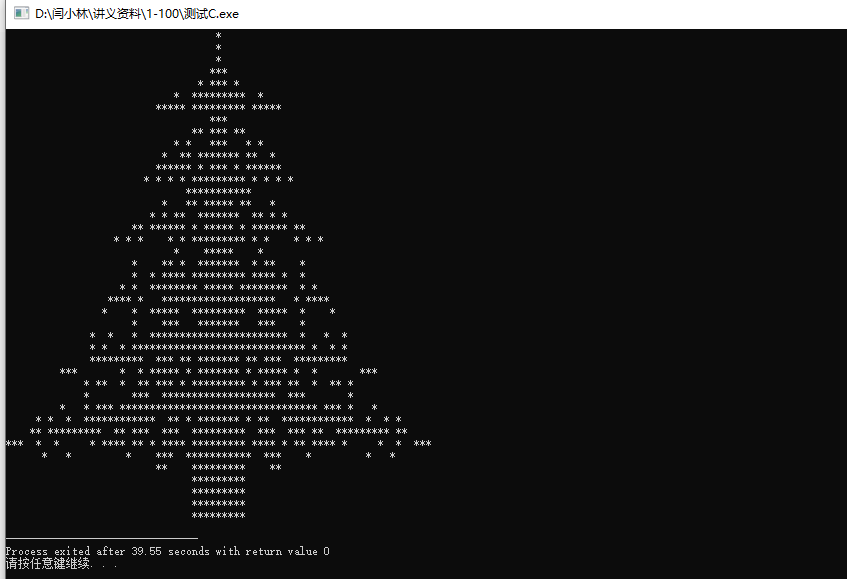这道理放在C语言学习上也一并受用。在编程方面有着天赋异禀的人毕竟是少数,我们大多数人想要从C语言小白进阶到高手,需要经历的是日积月累的学习。那么如何学习呢?当然是每天都练习一道C语言题目!!
经典:如何用C语言画一个“圣诞树”,我使用了左右镜像的Sierpinski triangle,每层减去上方一小块,再用符号点缀。可生成不同层数的「圣诞树」
源代码演示:
#include <math.h>
#include <stdio.h>
#include <stdlib.h>
#define PI 3.14159265359
float sx, sy;
float sdCircle(float px, float py, float r) {
float dx = px - sx, dy = py - sy;
return sqrtf(dx * dx + dy * dy) - r;
}
float opUnion(float d1, float d2) {
return d1 < d2 ? d1 : d2;
}
#define T px + scale * r * cosf(theta), py + scale * r * sin(theta)
float f(float px, float py, float theta, float scale, int n) {
float d = 0.0f;
for (float r = 0.0f; r < 0.8f; r += 0.02f) d = opUnion(d, sdCircle(T, 0.05f * scale * (0.95f - r))); if (n > 0) for (int t = -1; t <= 1; t += 2) { float tt = theta + t * 1.8f; float ss = scale * 0.9f; for (float r = 0.2f; r < 0.8f; r += 0.1f) { d = opUnion(d, f(T, tt, ss * 0.5f, n - 1)); ss *= 0.8f; } } return d;
}
int main(int argc, char* argv[]) {
int n = argc > 1 ? atoi(argv[1]) : 3;
for (sy = 0.8f; sy > 0.0f; sy -= 0.02f, putchar('\n')) for (sx = -0.35f; sx < 0.35f; sx += 0.01f) putchar(f(0, 0, PI * 0.5f, 1.0f, n) < 0 ? '*' : ' ');
}
编译运行结果如下:

代码已经有了,去给你心仪的女生表白叭,这个我没法替你
C语言学习路线文章来源: zhuanlan.zhihu.com,作者:,版权归原作者所有,如需转载,请联系作者。
原文链接:zhuanlan.zhihu.com/p/339176906